In the heart of Kyoto, where tranquility meets tradition, lies a harmonious blend of Zen gardens and the oldest sweets that have withstood the test of time. As visitors meander through the meticulously crafted landscapes, a sense of serenity envelopes them, inviting contemplation and reflection amidst the artistry of stone and sand.
Meanwhile, the allure of tasting the esteemed aburimochi beckons, offering a glimpse into Kyoto’s culinary heritage. But what deeper connections lie beneath the surface of these ancient practices and flavors, waiting to be uncovered?
Just The Basics
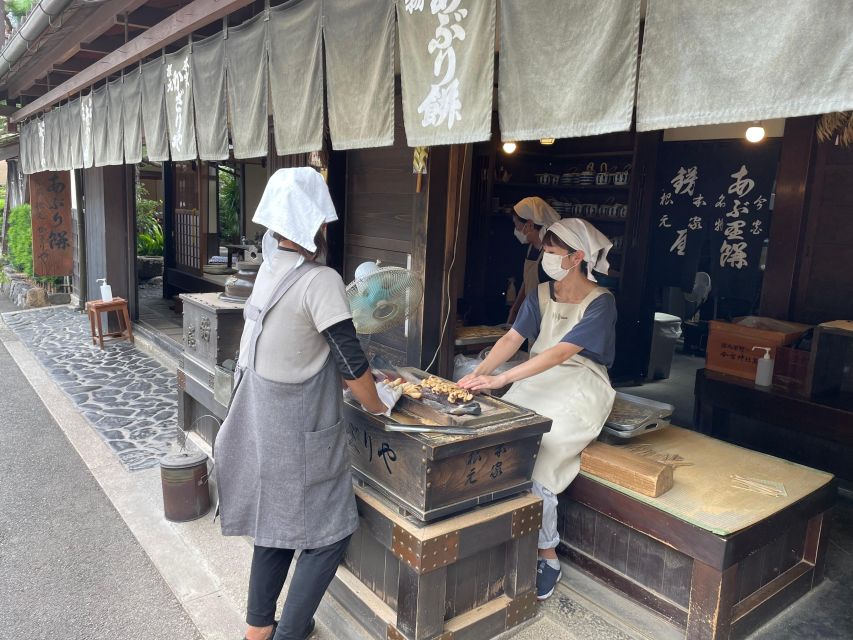
- Zen gardens reflect Zen Buddhist principles with water symbolism and tea ceremonies.
- Aburimochi, the oldest Japanese sweet, symbolizes tradition and cultural significance.
- Imamiya Shrine visit etiquette emphasizes respect through bowing, purification rituals, and quiet behavior.
- Daitokuji Temple offers insight into Zen Buddhism through gardens, architecture, and meditative practices.
Here's some other great tours and experiences nearby we think you'll like.
Zen Gardens in Kyoto
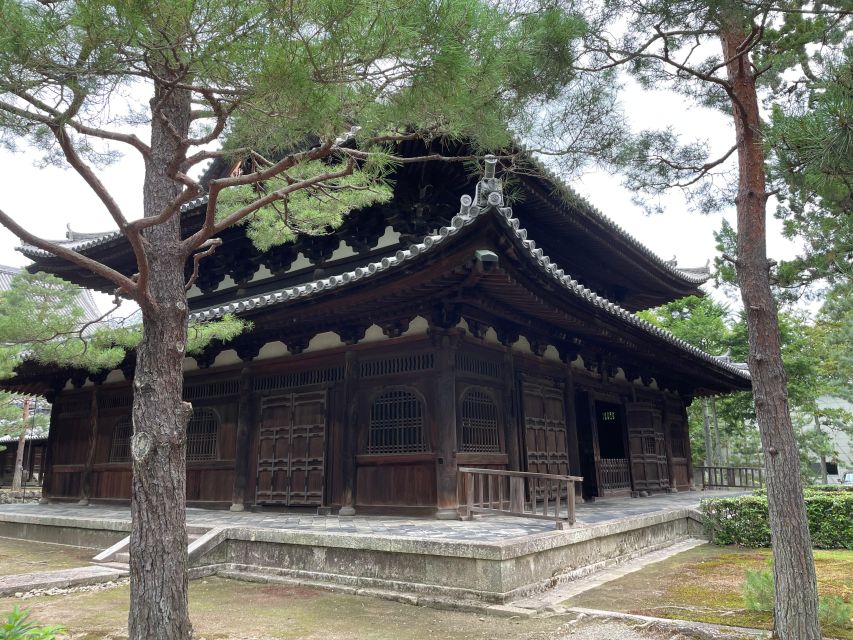
Nestled within the historic city of Kyoto are enchanting zen gardens that captivate visitors with their serene beauty and rich cultural heritage. The Zen garden design, characterized by meticulous raking of gravel to symbolize water or waves, offers a meditative space for contemplation and reflection.
Beyond their aesthetic appeal, these gardens serve as a physical manifestation of Zen Buddhist principles, emphasizing simplicity, harmony, and tranquility. Traditional tea ceremonies often take place in these gardens, further enhancing the spiritual experience by fostering mindfulness and connection with nature.
The meticulous arrangement of rocks, moss, and plants in these gardens reflects a deep respect for nature and the passage of time, inviting visitors to enjoy a moment of peaceful introspection.
Aburimochi: Oldest Japanese Sweets
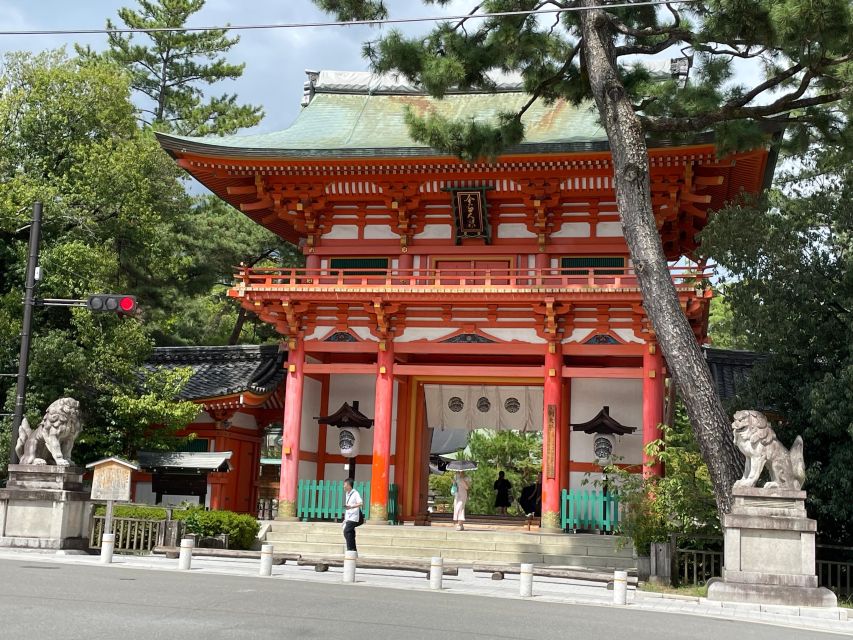
Believed to date back centuries, aburimochi stands out as a revered delicacy in Japanese confectionery history. This traditional sweet has a rich historical background and is made from simple yet essential ingredients.
Key points to note about aburimochi include:
-
History: Aburimochi has been enjoyed in Japan for generations, with its origins tracing back to ancient times. Its enduring popularity showcases the deep-rooted traditions and cultural significance of this sweet treat.
-
Ingredients: The main components of aburimochi are mochi (glutinous rice cake) and kinako (roasted soybean flour), creating a unique texture and flavor profile. The simplicity of these ingredients highlights the elegance and purity of traditional Japanese sweets.
-
Cultural Significance: Aburimochi isn’t just a dessert; it symbolizes respect for tradition and the art of Japanese craftsmanship, making it a cherished part of the country’s culinary heritage.
Imamiya Shrine Visit
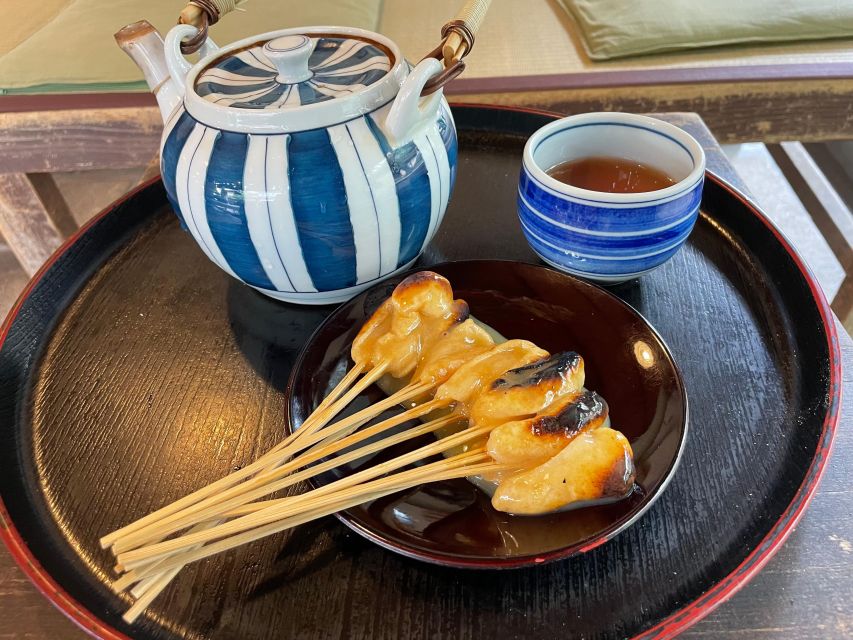
The visit to Imamiya Shrine offers a captivating glimpse into Kyoto’s rich spiritual heritage and traditional practices. When visiting this sacred site, it is essential to observe proper etiquette to show respect for the shrine and its customs. Below is a table outlining some key etiquette tips to keep in mind during your visit to Imamiya Shrine:
| Etiquette Tips | Description |
|---|---|
| Bow Respectfully | Bow once upon entering and leaving the shrine. |
| Purification Ritual | Perform the symbolic purification ritual using the water basin near the entrance. |
| Photography Etiquette | Refrain from taking photos in certain areas to respect the sacredness of the shrine. |
| Silence is Golden | Maintain a quiet demeanor to honor the peaceful atmosphere of the shrine. |
Daitokuji Temple Exploration
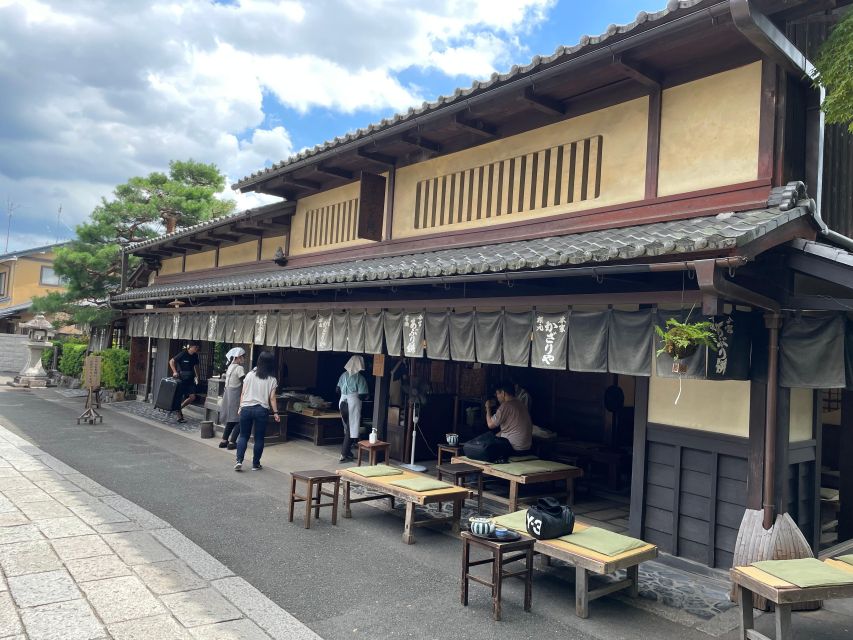
Exploring the serene grounds of Daitokuji Temple unveils a profound journey into the essence of Zen Buddhism and traditional Japanese architecture. The temple’s unique features and tranquil atmosphere offer visitors a deep insight into meditation practice and the spiritual significance of temple architecture.
Here are three key aspects to consider when exploring Daitokuji Temple:
-
Zen Gardens: Experience various beautifully designed Zen gardens that symbolize harmony and balance.
-
Temple Architecture: Marvel at the intricate details of the temple structures, showcasing traditional Japanese architectural styles.
-
Meditation Practice: Witness firsthand the meditative practices carried out within the temple grounds, offering a glimpse into the spiritual realm of Zen Buddhism.
Early Morning Serenity Experience
At the break of dawn, learn about the tranquil ambiance of early morning serenity at Daitokuji Temple.
The early morning tranquility envelops visitors in peaceful surroundings, offering a unique opportunity to connect with the spiritual essence of the temple grounds. The gentle rustling of leaves and the soft glow of the rising sun create a serene atmosphere conducive to reflection and inner peace.
As the day begins, the temple emanates a sense of calm that’s truly rejuvenating for the soul. This moment of quietude allows for a deeper appreciation of the beauty that surrounds you, setting the tone for a day filled with harmony and mindfulness.
Experience the magic of dawn at Daitokuji Temple and start your day with a sense of serenity that will stay with you long after you leave.
Tour Inclusions and Participant Information
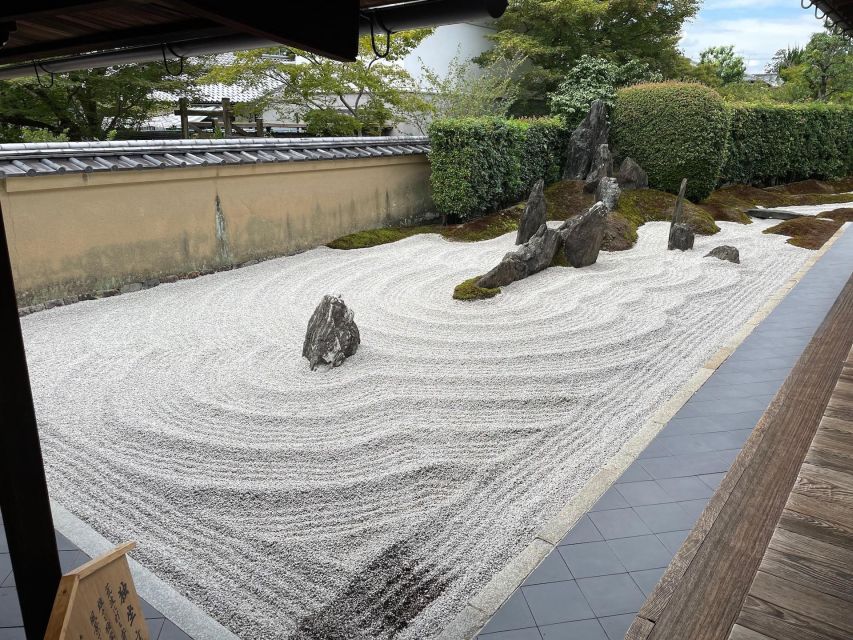
For an enriching cultural experience during the Kyoto tour, participants can benefit from the included English translation/guide fee and entrance fee for three temples. The inclusions ensure a smooth and informative journey through the historical sites.
Plus, you will be able to taste the famous aburimochi, the oldest sweets in Japan, adding a delightful culinary experience to their cultural exploration.
- English translation/guide fee
- Entrance fee for three temples (up to 2,000 yen)
- Cost of aburimochi (600 yen per serving of mochi and tea)
These inclusions not only enhance the participants’ understanding of the sites visited but also provide a well-rounded experience that encompasses both visual and gastronomic delights.
Important Reminders for the Tour
Participants should prioritize safety and preparedness by adhering to essential guidelines provided by the tour organizers for a seamless and enjoyable experience in Kyoto. Tour preparation and safety are paramount, so checking availability for dates, meeting points, and ensuring one carries enough cash in Japanese Yen are crucial reminders.
On top of that, being mindful of cultural etiquette and traditions, such as proper shrine visit etiquette at Imamiya Shrine and respecting the serene atmosphere of Daitokuji’s zen temples, adds depth to the experience. It’s also recommended to have overseas travel insurance for added security during the tour.
Frequently Asked Questions
Are There Any Restrictions or Specific Requirements for Participating in the Tour of Serene Zen Gardens and the Oldest Sweets in Kyoto?
For the tour involving serene gardens and the oldest sweets, participants must consider age limitations, meeting point details, availability, and the need for travel insurance and cash. Specific restrictions include age cutoff and meeting requirements.
Can Participants Purchase Additional Servings of Aburimochi During the Tour?
Participants can indeed purchase additional servings of aburimochi during the tour. This sweet indulgence allows for a delightful experience, enhancing the journey through Kyoto’s serene zen gardens and cultural landmarks. Enjoy the treat!
Is There a Dress Code or Recommended Attire for Visiting Imamiya Shrine?
There is no specific dress code for visiting Imamiya Shrine, but it is advisable to dress modestly out of respect for cultural norms. Visitors are encouraged to wear comfortable attire suitable for walking and exploring.
Are There Any Traditional Customs or Practices That Visitors Should Be Aware of When Exploring Daitokuji Temple?
When exploring Daitokuji Temple, visitors should be aware of traditional ceremonies, etiquette, and cultural practices. Mindfulness meditation, tea ceremonies, and the intricate Japanese architecture all contribute to the serene and enriching experience at this historical site.
How Far in Advance Should Participants Book the Tour to Secure a Spot, Especially During Peak Tourist Seasons in Kyoto?
Participants should book the tour well in advance, especially during peak tourist seasons in Kyoto, to secure a spot due to high demand. Availability can fill up quickly, so early reservations are recommended for guaranteed participation.
Final Words
To sum it up, a journey through Kyoto’s serene Zen gardens and a taste of the city’s oldest sweets offer a profound glimpse into the rich cultural heritage of Japan. The tranquility of the landscapes, the intricate designs of the stone gardens, and the history behind aburimochi provide a unique and insightful experience for visitors.
Enjoy the spiritual significance of the Imamiya Shrine and Daitokuji Temple complex, and embrace the early morning serenity for a truly unforgettable exploration of Kyoto’s cultural treasures.
